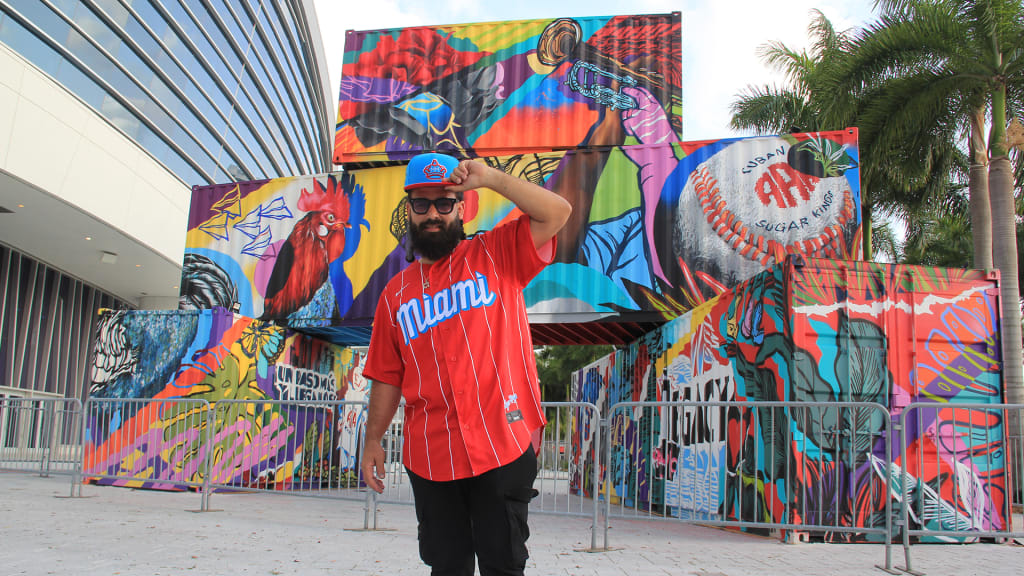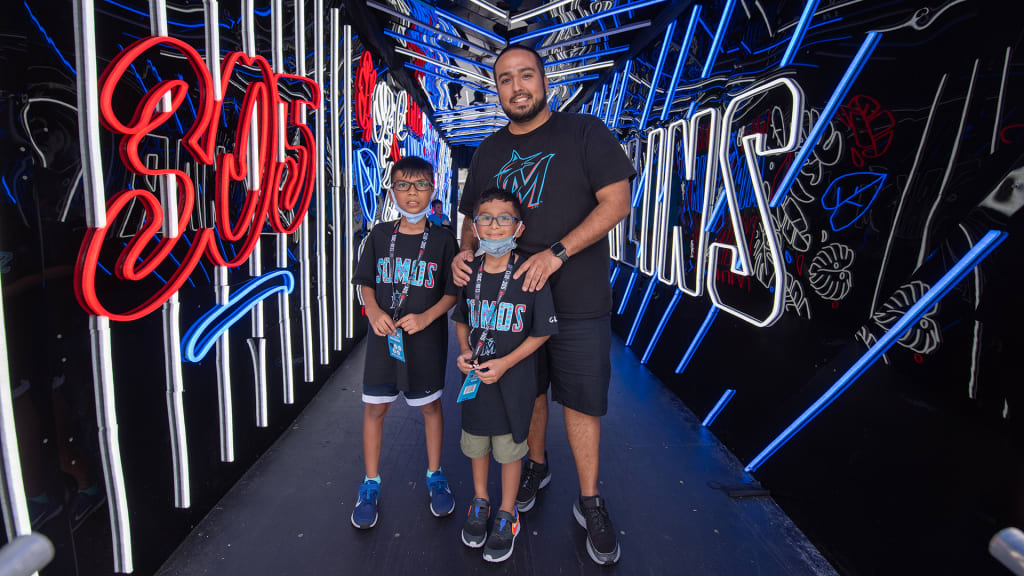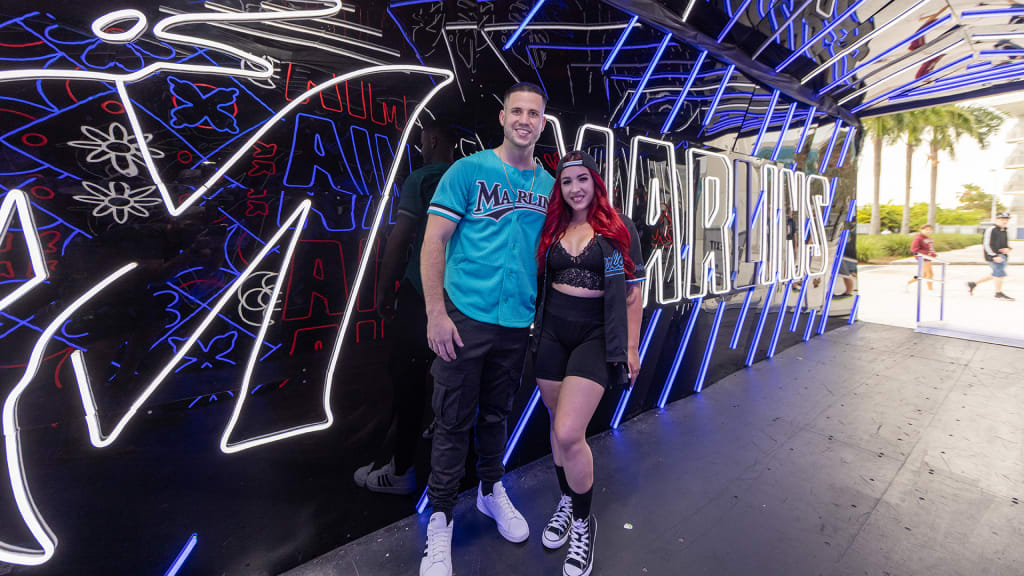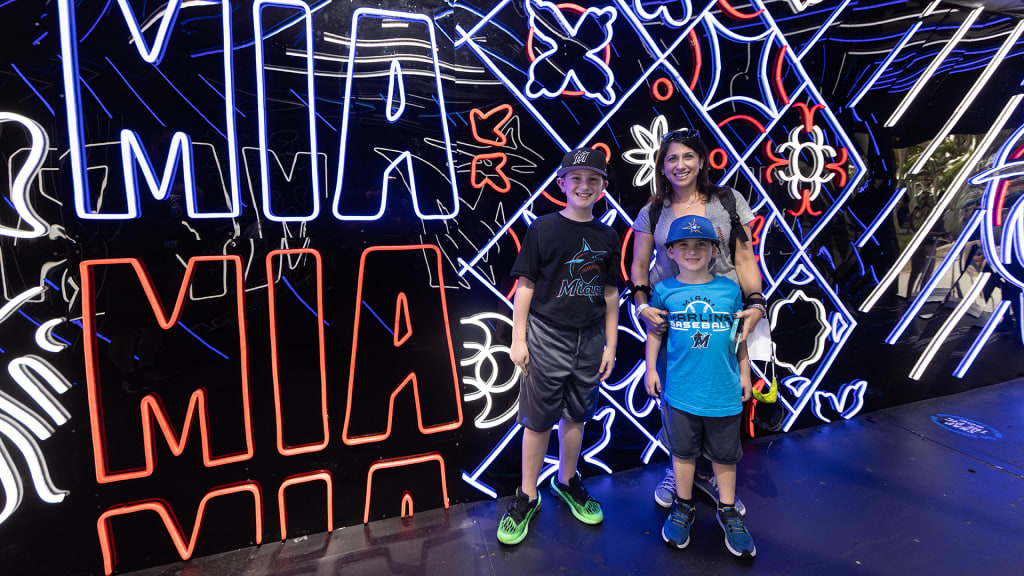
MIAMI -- Months before the unveiling of their popular City Connect uniforms last May, the Marlins discussed ways to pay homage to the Havana Sugar Kings, a former Minor League team based in Cuba. The organization intended to activate all facets of the gameday experience -- from retail to food and beverage to jumbotron presentation -- in the hopes of extending the story. Its goal was to blend the culture of Miami with the established art scene in the city and the legacy of Cuban baseball.
"We wanted a story that had some depth," said Mike Shaw, the Marlins' senior vice president of experience & brand. "With the launch of the on-field uniform, it could be more than just what's happening on the field, and so the other component of that was really about creating a landmark or another destination that people could come and consume and understand the story."
In January 2021, the Marlins came up with the concept of an art installation called "Folklore" and turned to Puerto Rican mixed media artist Carlitos Skills, whose art oozed heart and soul, to help bring their vision to life. He and the marketing team talked through early design into the spring. By early May, the Marlins began teasing the installation with social media posts.
Four shipping containers arrived at loanDepot park's West Plaza, and unbeknownst to fans, the first tower's interior already had LED lights installed because the Marlins had filmed their "gladiator shoot" with the players there. Once the containers were secured, Skills and his team were tasked with painting the exterior murals daily on site in March and April before Folklore was revealed on May 21 in conjunction with the debut of the Sugar Kings-inspired City Connect uniforms.
"This feels like I got the power in my hands to make something that is going to be in the heart of all the Latin Americans and all the people that come to this space," Skills said in a video released by the club. "This piece is very symbolic."
The interactive experience launched nearly two months later on July 23, turning the space from a destination to an activation for fans. The aim is for anyone visiting the ballpark, which is an extension of the community, to get a taste of Miami's flavor. All of this was done with the assumption fans would share content via social media platforms.




"We need to give people spaces so that they can share, so they can say, 'Hey, I'm at loanDepot park,'" Shaw said. "But they just don't want to take a random photo in some place. So let's create spaces. When Folklore was concepted, we were thinking about, 'Let's provide something of a 'wow' moment,' so that people can say, 'I'm at loanDepot park and you should be here, too. And this is the backdrop' or 'this is the area.'
"I think the great thing about Folklore is that you have many different angles. You can go inside a container, but you could be in five different places. You could take a selfie from five or six different places around Folklore and get a different angle and give a unique point of view. I think that's what's cool versus one singular wall. It's more of a 3D effect."
QUICK FACTS
Name: Folklore
Location: West Plaza at loanDepot park
Elements
• Four shipping containers: (2) 40’(L) x 9’(H) x 7.5’(W)
(2) 20’(L) x 9’(H) x 7.5’ (W)
• LED flood lights on exterior for nighttime illumination
• Stacked shipping containers -- 27 feet tall in combined height
• LED light tunnel experience with Marlins branding on interior of one container
• Same set used for the 2021 Miami Marlins player photo and video shoot for content used on scoreboard, in-game features, publications and in-market advertising
Fan access
• Pregame and postgame at Marlins weekend home games
• Wednesdays, Fridays and Saturdays of the non-playing season during loanDepot park tours fans can see outside; in-season fans can go inside
• Special events as announced
• Exterior accessible during all Marlins home games, as well as non-event days during public access hours to West Plaza
• Indoor capacity managed because of COVID-19 protocols
